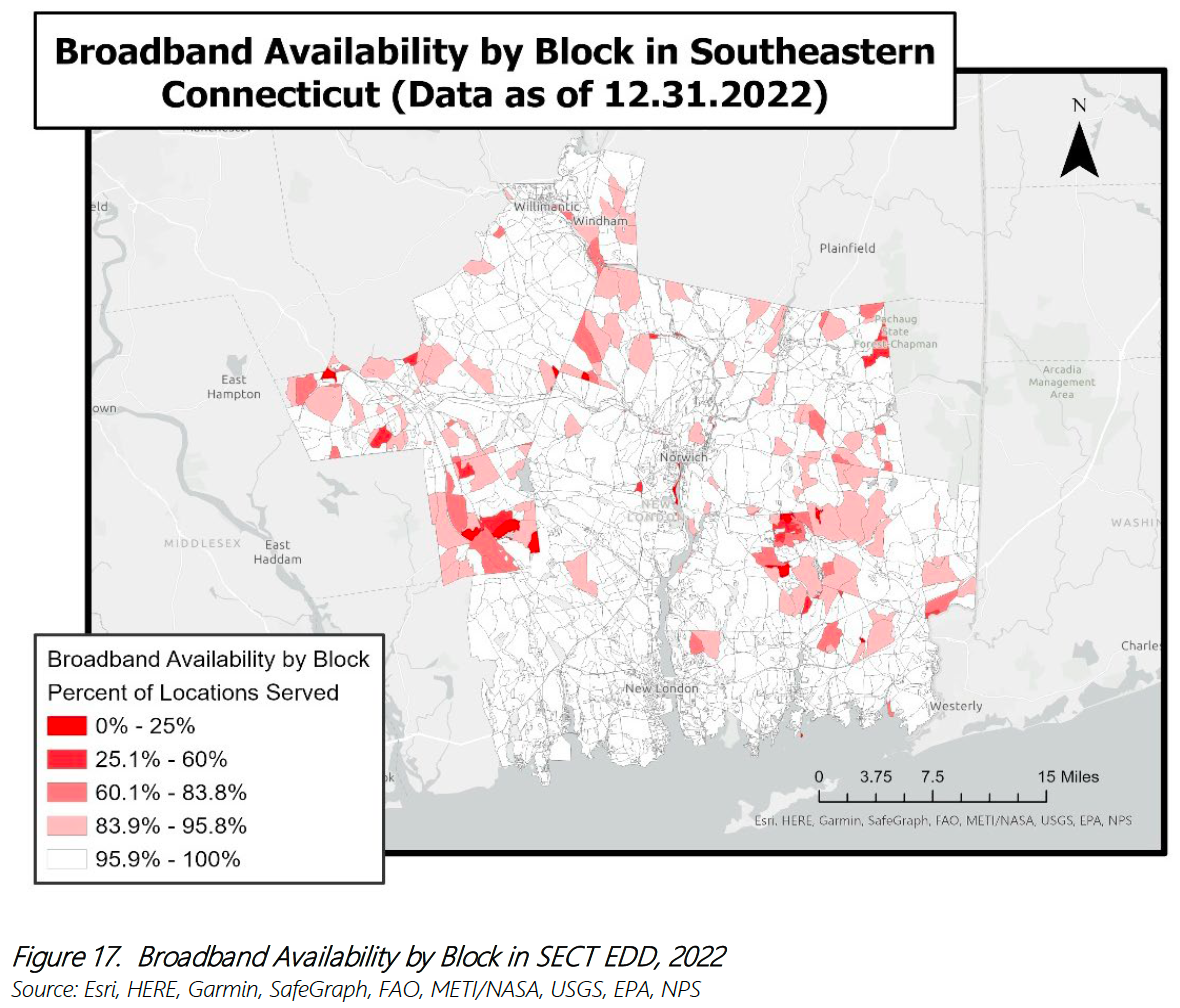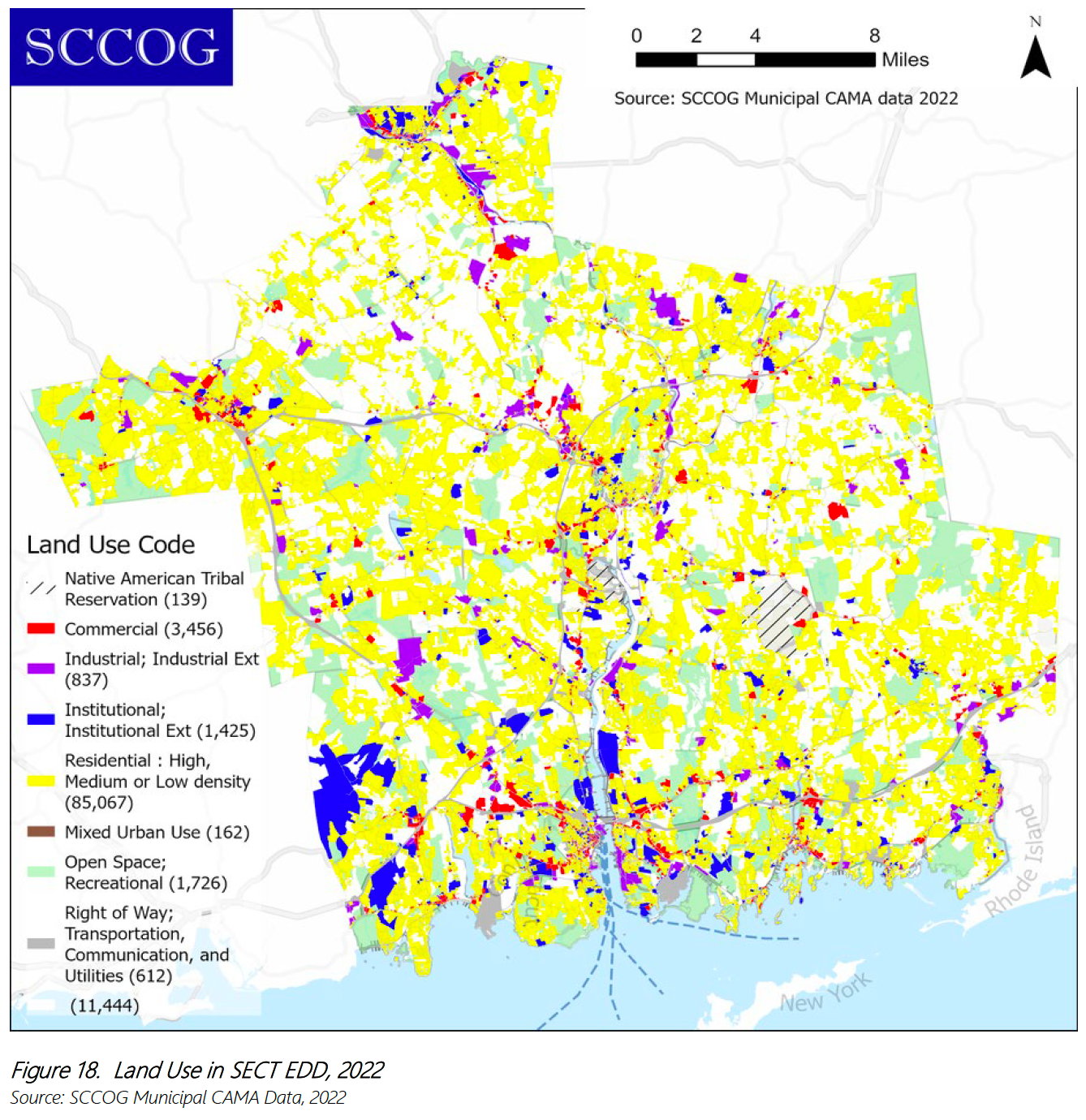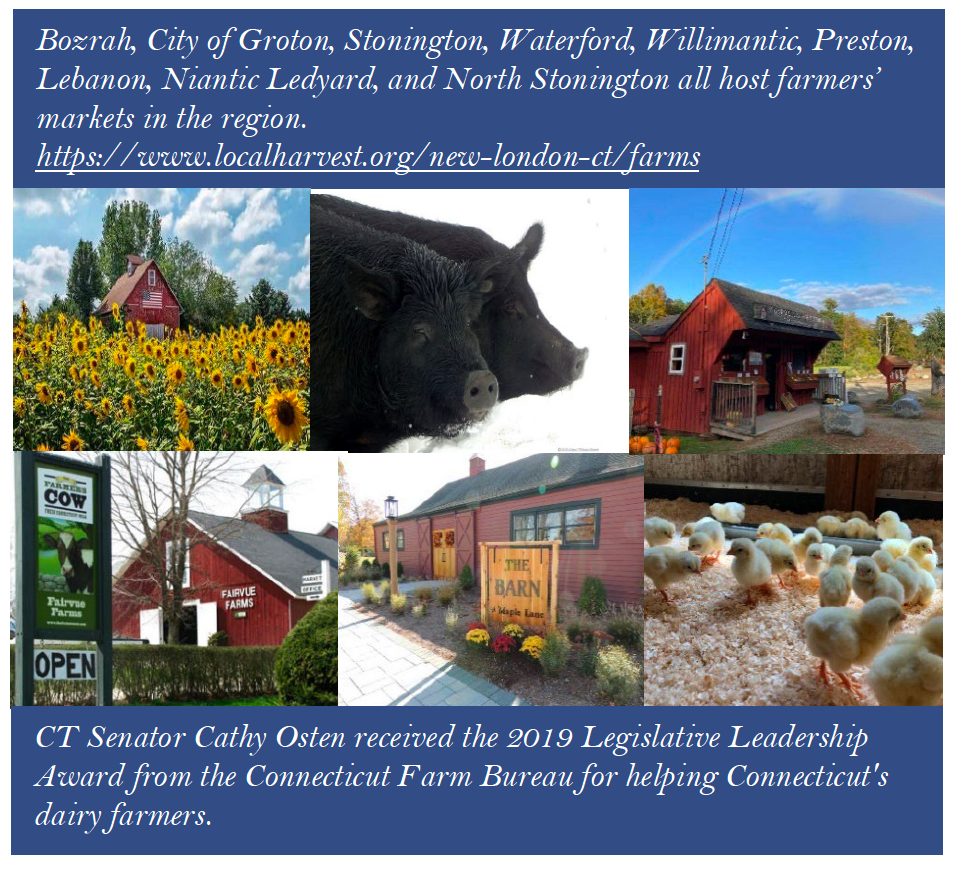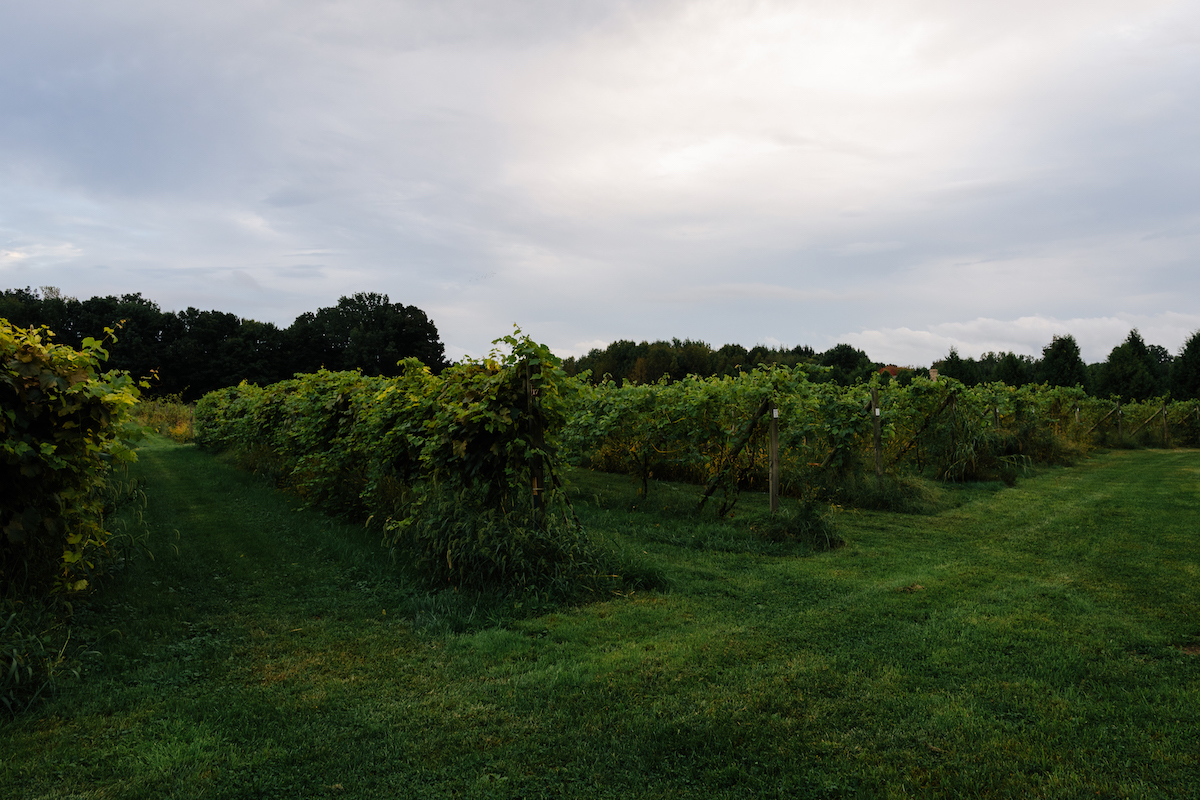Overview of the Economy
LAND USE & AGRICULTURE
LAND USE
SECT is a diverse setting with land that is designated rural, suburban and urban (Figure 18). While much of the region shows undeveloped land, development, in fact, has been in full swing over the past five years. The pandemic did not appear to curtail development; on the contrary, many people now had the time to make the home improvements that had been put off during the recession, and both homeowners and developers took advantage of the historic low interest rates to invest in properties.
seCTer has been involved in several developing projects in the EDD including Preston Riverwalk, Ponemah Mills, Thames River Innovation Place, Thames River Heritage Park (TRHP), and several Connecticut Port Authority projects funded by Connecticut Department of Energy and Environmental Protection (DEEP).

In addition, EDD has received funding for utility modernization, bridge repair, infrastructure projects, brownfields redevelopment, and facilities upgrades, including airport runway and capacity upgrades and a new port along the Thames River. All this investment is central to regional prosperity and resiliency.
On the land use regulation front, significant and controversial changes were made to state statutes that impacted local zoning, as well as pandemic-related changes that impacted how public space is used and how public meetings are held (Table 6).
Land use commissions shifted to virtual meetings during the Covid-19 pandemic due to spatial distancing concerns. This change allowed for greater participation for those with constraints that kept them from being physically present at meetings, e.g., children, no transportation, poor health, etc., provided they had internet access. However, those without access to the internet and related technology were suddenly left out. Conducting public hearings and reviewing complex development plans via a virtual platform proved less than ideal, and many plans suffered significant delays. As it appears the virtual meeting option will continue indefinitely, it will be critical to ensure that all members of the community have access to local decision-making processes and that conversations about change also occur beyond the virtual meeting and out in the communities where the changes are proposed.

The pandemic has also impacted how the public thinks about and uses public spaces, e.g., streets, sidewalks, plazas, etc. Public spaces were transformed into outdoor dining rooms, Covid testing centers, meeting places and waiting rooms, becoming more flexible and multi-use in the process. On any given day, a particular space could be used for a wide variety of uses, posing a challenge to towns with respect to zoning and permitting, and local regulations will have to change to reflect and adapt to this change.
Table 6. Land Use/Zoning/Development-related Changes
AGRICULTURE
The agricultural and aquacultural sectors dot rural towns with dairy farms and the shoreline with marinas, oyster beds and commercial fishing vessels. Farming has historically played a vital role in the EDD economy. The region is home to a multitude of very successful farmers’ markets, including one voted best in the state. A strong emerging sector of agricultural manufacturing shows great promise for the region. However, many farms across the country were impacted by several hurricanes in 2017 and 2018, experienced historically poor planting conditions in 2019, and saw their exports reduced from retaliatory tariffs. The Covid-induced economic crisis threatened the viability of many farming operations, and with it the sustainability of the domestic food supply. Some examples of the pandemic-induced impacts include:
- Dramatic decrease in miles driven as the public sheltered in place. This led to a decreased demand for biofuels, which in turn led to reduced demand for grains, particularly corn.

- Immediate and drastic decline in food demand by restaurants and hotel customers. This took away farmers’ and food processors’ largest buyers, especially for meat, dairy and specialty crops.

Farmers experienced a surge in customers during the pandemic, particularly during the initial “lock-down” as people were afraid to go to crowded stores and the larger farmers’ markets were closed. Farmstand markets, community supported agriculture (CSA) memberships, and farm-to-table events put on by area restaurants also grew in popularity.
Southeastern Connecticut is seeing a resurgence in family farming fueled by a younger generation able to adopt new business models and willing to respond to changing social attitudes about food and where it comes from. This new generation of farmers also embraces new technical advances that allow them to work more efficiently.
